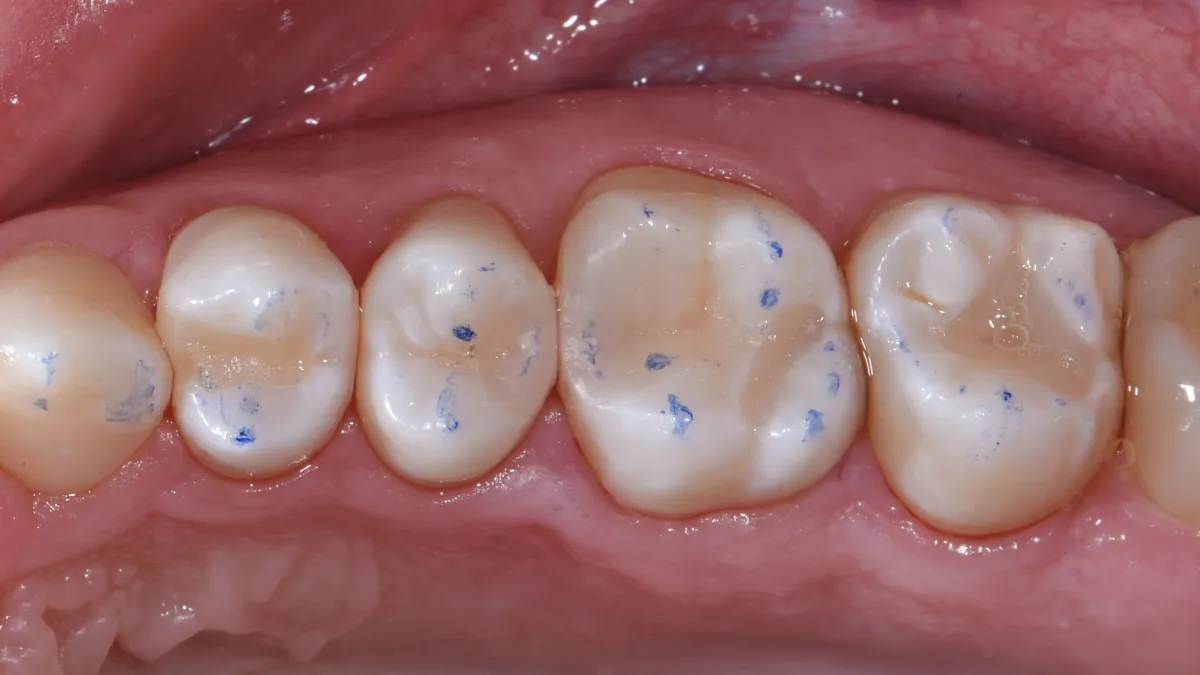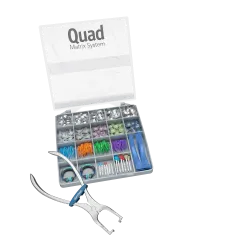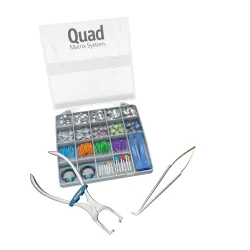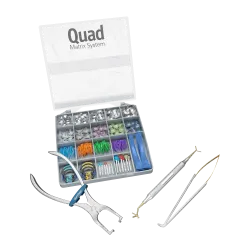Are your curing lights performing effectively? Find out for FREE
The new Garrison Quad Matrix System of matrices, bifurcated wedges, and directional separator rings represents a significant advancement in simplifying and optimizing the management of direct Class II restorations, especially for back-to-back cavities, or rather two adjacent Class II restorations facing each other.
It is precisely in these cavities that the system performs at its best, allowing the matrices to adapt ideally to the cavity margins, drastically reducing material overhangs and minimizing the need for extensive finishing. Likewise, the system works exceptionally well for single Class II restorations, ensuring excellent adaptation and marginal precision.
The complete system consists of sectional firm-band matrices in various shapes, designed to easily adapt to premolar and molar cavities as well as deep subgingival lesions. A small tab on top of the matrix helps position it effortlessly against the cervical margin to be reconstructed.
There are four different sizes of bifurcated wedges to accommodate various interproximal spaces, all featuring a split-tip design. This unique bifurcated shape allows them to work in synergy with the directional rings, adapting to the convex curvature of the tooth profiles. As a result, the matrices achieve an optimal marginal adaptation, reducing excess composite that would otherwise require extensive finishing.
The system also includes four separator rings, two tall and two short, similar to the Strata-G™ or Composi-Tight® systems, allowing them to be stacked if needed. However, the standout feature of these new rings is that each separator ring has two distinct inserts.
- One is a traditional saddle-shaped insert that sits over the wedge, stabilizing it while enhancing gingival tissue retraction.
- The other is a pointed insert, indicated by an arrow, which fits and stabilizes between the bifurcated wedge tips. This design allows the ring to synergize with the wedge by pressing and perfectly adapting the bifurcated wedge tips against the convex profiles of the adjacent teeth. This ensures that the sectional matrices remain tightly sealed against the cervical margin requiring reconstruction.
Each ring color corresponds to two versions, each with different working tips positioned in opposite directions. This allows the correct ring to be selected based on whether the bifurcated wedge was inserted from the buccal or lingual side. The goal is to place the working tip of the ring between the wedge’s bifurcated tips, ensuring optimal matrix adaptation against the tooth to be restored.
At the most coronal area of both inserts, silicone components—already present in previous ring designs—further enhance the matrix’s adaptation to the remaining tooth structure, ensuring an even more precise and intimate fit. At the most coronal area of both inserts, silicone components—already present in previous ring designs—further enhance the matrix’s adaptation to the remaining tooth structure, ensuring an even more precise and intimate fit.
Following is a case of a back-to-back Class II restoration performed using the new Quad system.
Full Size Image
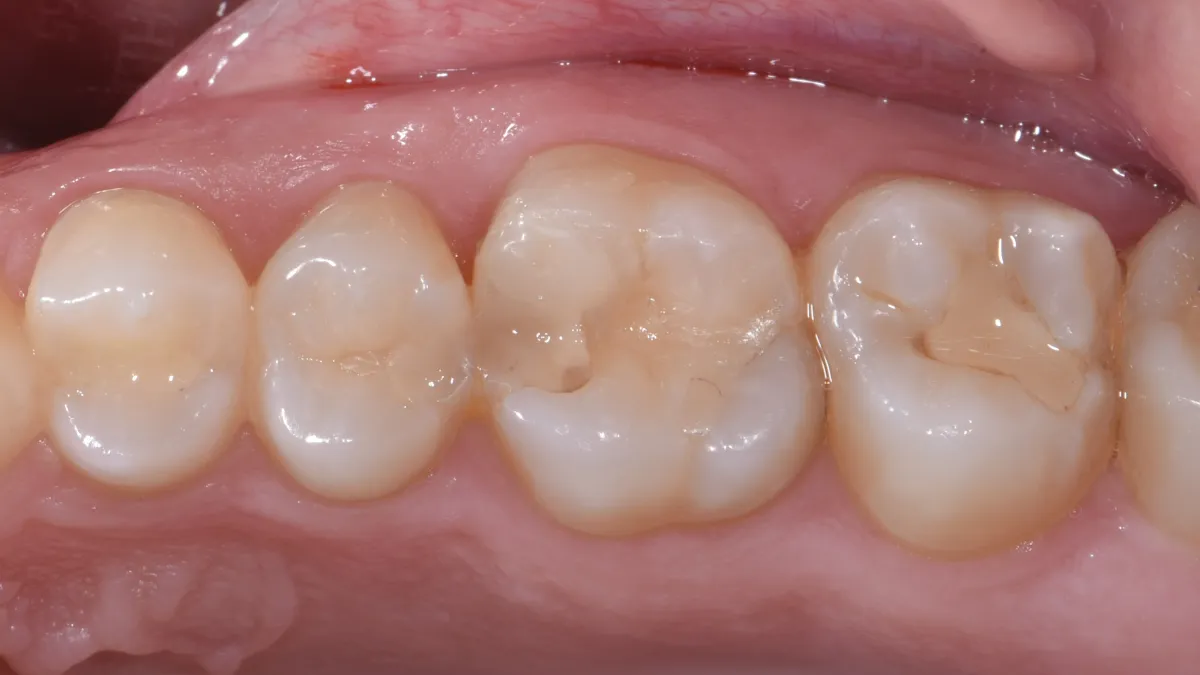
Full Size Image
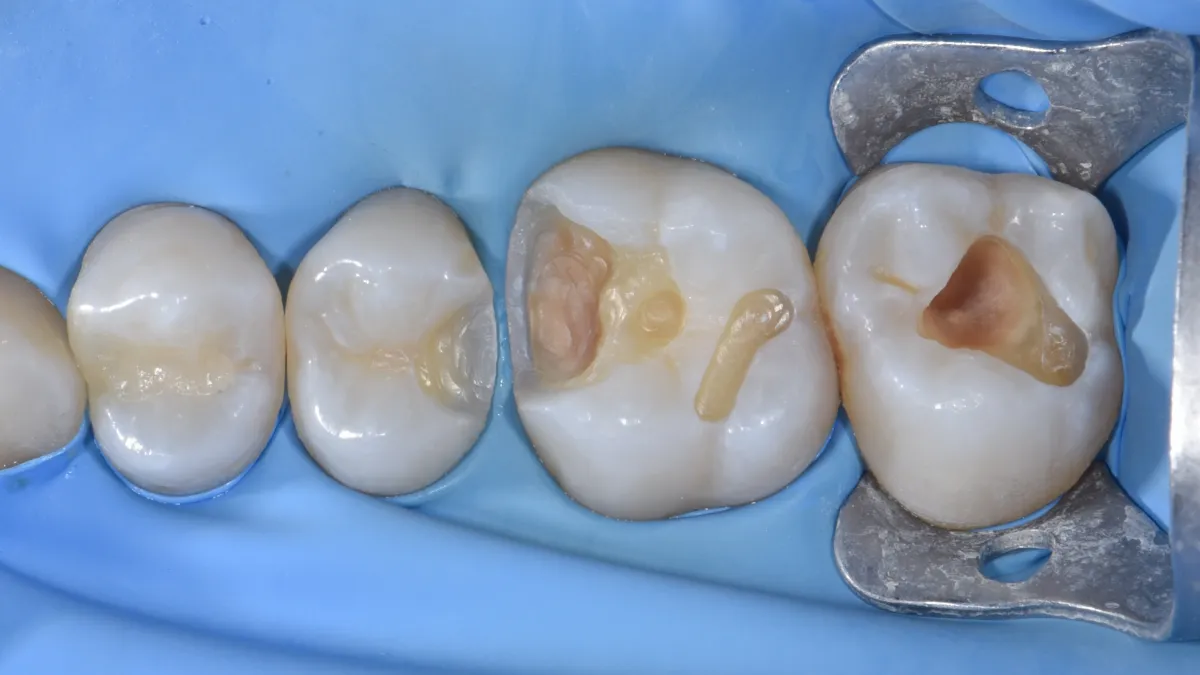
Full Size Image
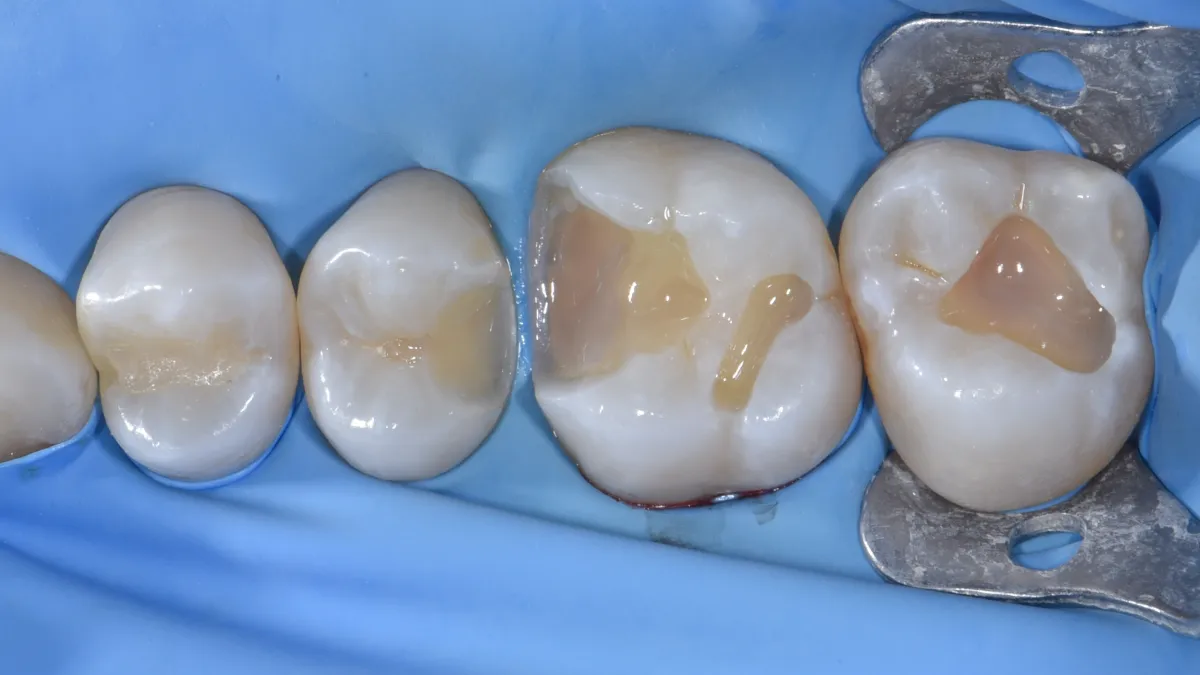
Full Size Image
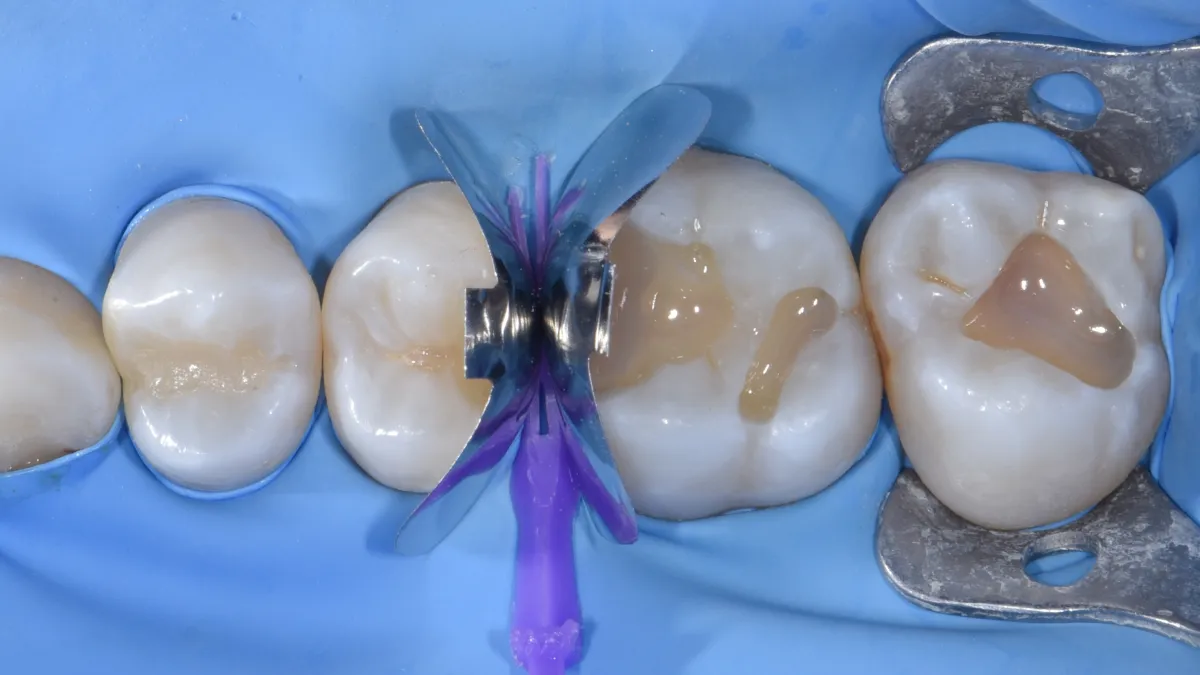
Full Size Image
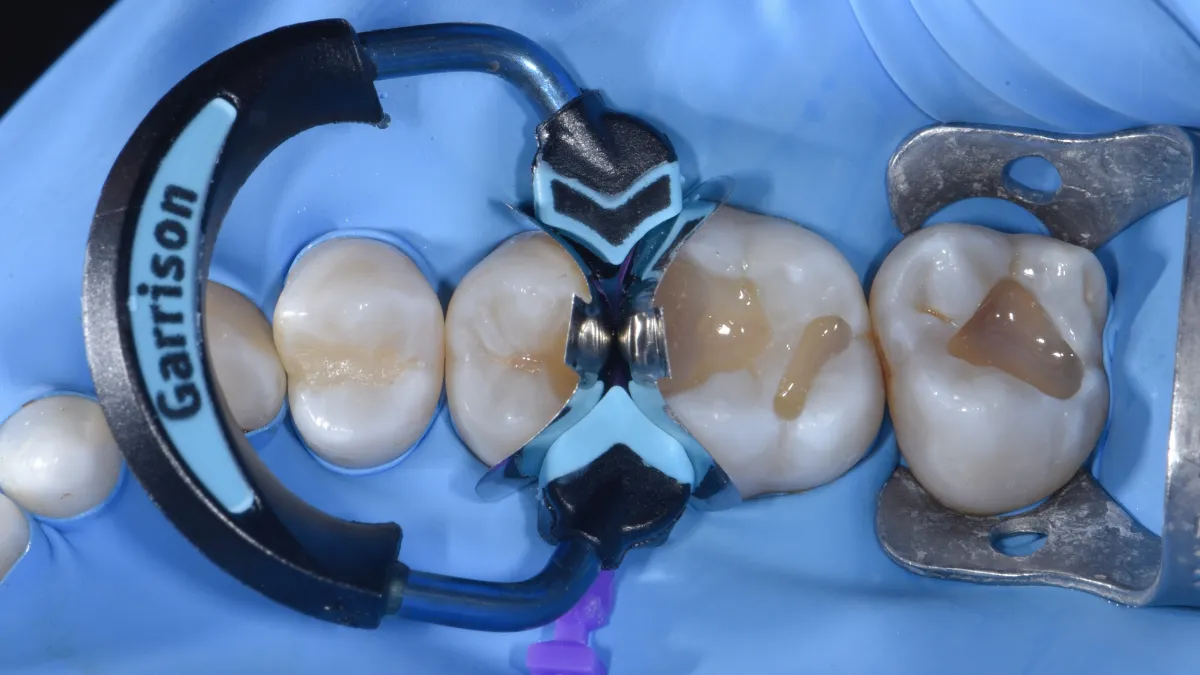
Full Size Image
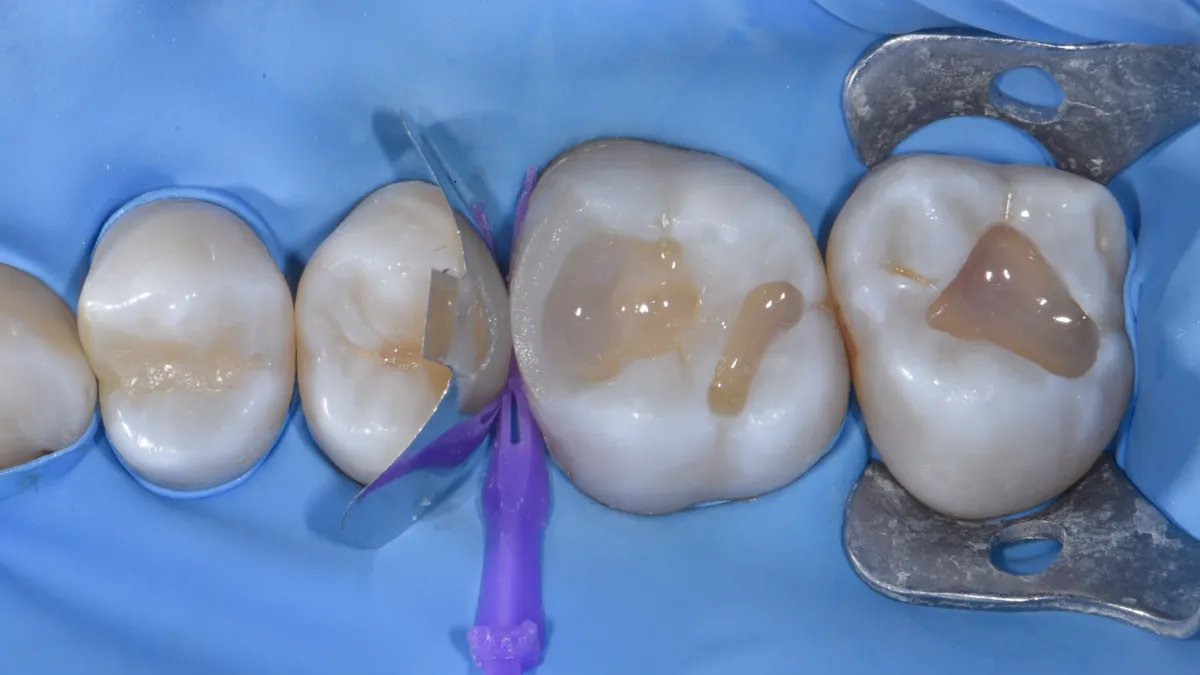
Full Size Image
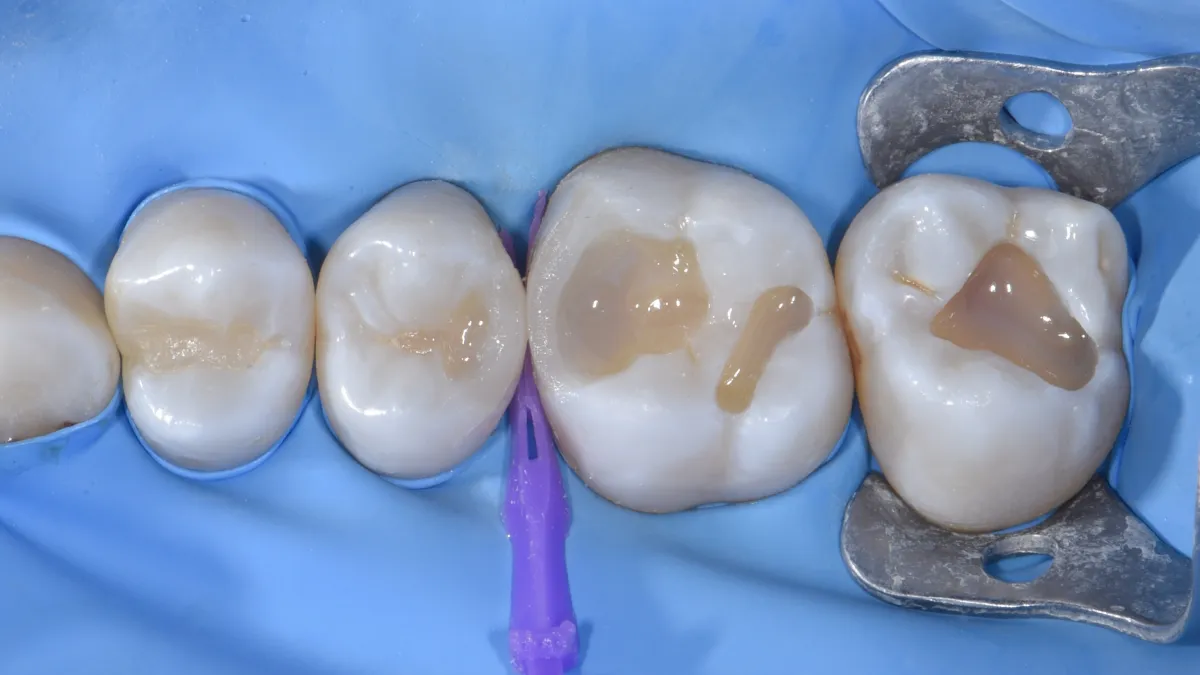
Full Size Image
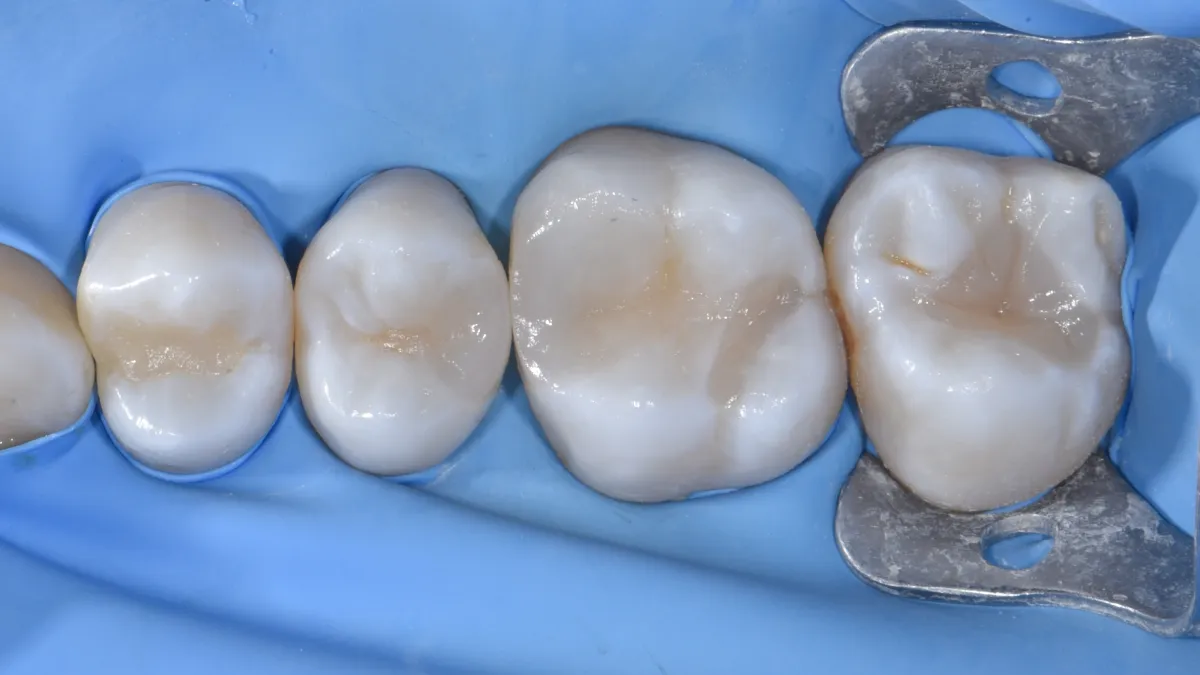
Full Size Image
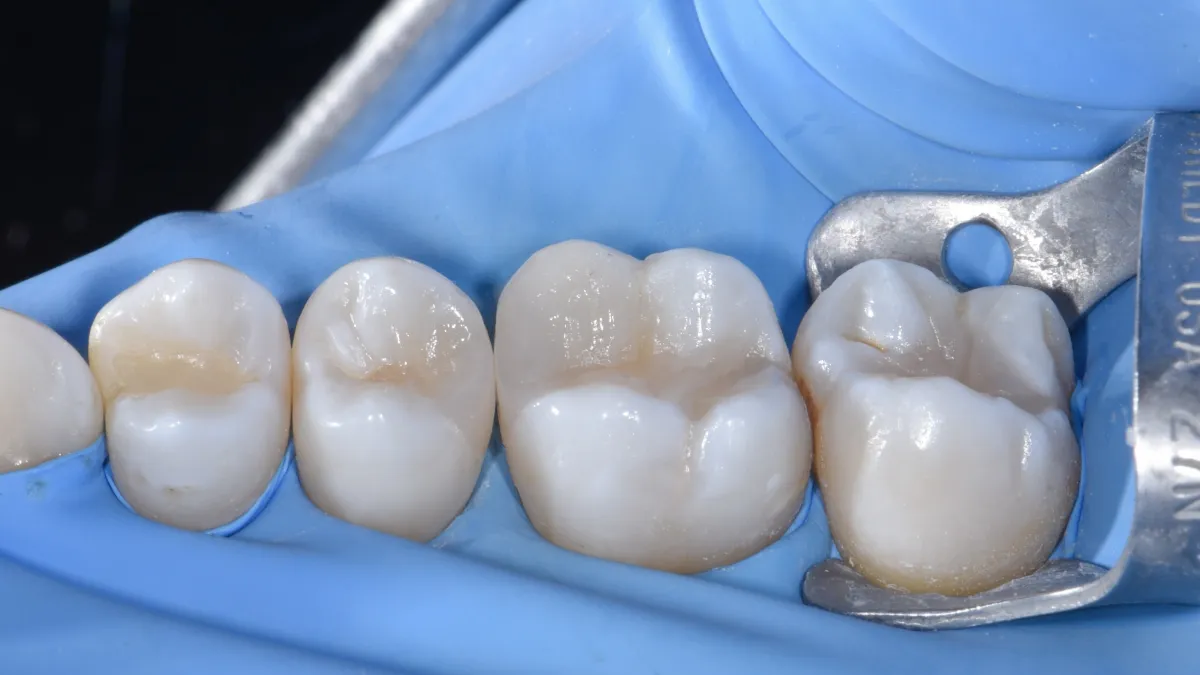
Full Size Image
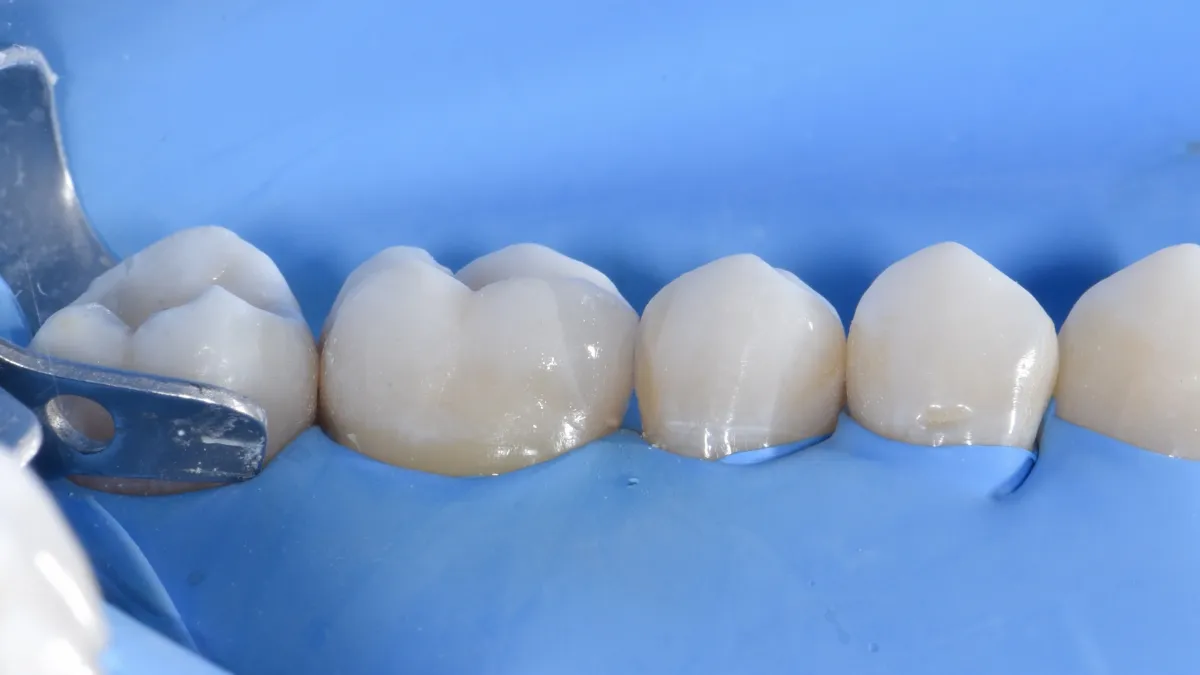
Full Size Image
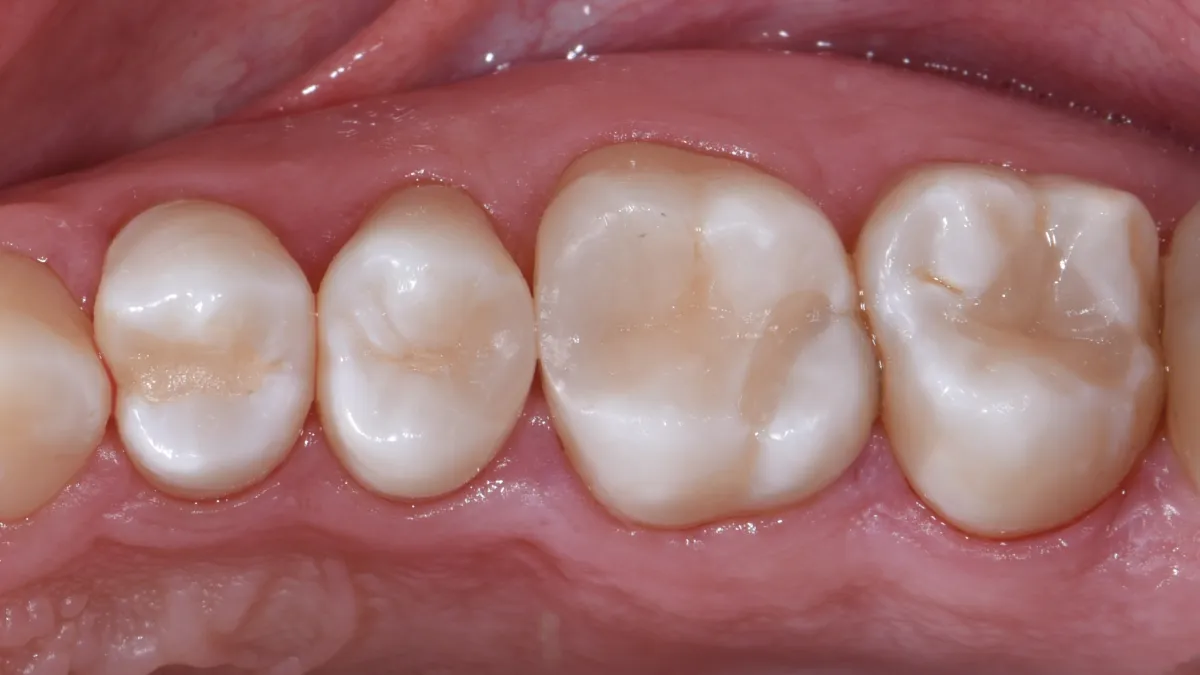
Full Size Image
